Breezie
Gold Member
- Oct 3, 2009
- 6,269
- 2,119
- 🥇 Banner finds
- 1
- Detector(s) used
- White's DFX & Spectrum~Garrett's Pro-Pointer~VibraProbe
- Primary Interest:
- Metal Detecting
Scroll down to Page 12 to see the Slave Bracelet in the Western & Eastern Treasures magazine, April 2012 issue. My SAMBO Cap Gun also made the same article. Here is the original post on SAMBO:
http://www.treasurenet.com/forums/t...ap-gun-1897-before-after-pics.html#msg3016733
'Ole' Sambo didn't make the banner so I was really happy to see it in W&E magazine.
Hey Gang, Two weeks ago I dug what I thought was an old bracelet. At first glance, I thought it was one of those copper arthritis bracelets, so I threw it in my pouch without much of a to-do. After getting home and examining it, I realized it was not 'grannies copper arthritis bracelet.' I posted it on the What Is It forum and got an array of ideas from hog, bull nose rings to key chains. Although several people thought it was a trade bracelet. The link to the original post is listed below.
With so many different opinions, I shelled out a few bucks and had it professionally appraised. The bottom line: It's an African Slave Trade Bracelet circa 1700-1750!!!
Here is the appraisal:
I have closely examined the information you have submitted. Thank you for the images and descriptive information. My findings are based on this information.
Your item is a brass slave bracelet from Africa; the bracelet has the "horns" at the end indicative of African slave bracelets. I would date the bracelet C. 1700-1750.
You stated it was found in an area where the Saponi Indians once lived. The Saponi were originally from Virginia and North Carolina, many later relocated to Ontario, Canada, Georgia, Tennessee and Ohio and disappeared from the historical record as a tribe by the end of the 18th century (1700-1750). The interesting facts about the Saponi are that they were at one time classified by some anthropologists as being known as tri-racial isolates. Records have shown that the Saponi had European, African and Native American ancestry in varying degrees, the above mentioned tri-racial groups did settle and create communities in frontier and border areas of the southern states.
The first slaves were brought from Africa to SOUTH Carolina in 1670 and North Carolina did not play a large part in the early slave trade, but North Carolina did rely on slaves for carpentry, masonry, and construction as well as agriculture.
The bracelet is very similar to 18th century African slave bracelets. North Carolina jewelry made by Native American tribes in the 18th century were made out of bone, shells, polished stones, beads, copper, and from brass obtained from white traders. The Saponi would not have had access to metals unless it was a trade to them by the European settlers (not made by the Saponi, but worn by a tribe member).
The value would be between $95.00 and $125.00 in today's retail market. The market comparison approach to value was used which estimates value by comparison with properties sold in the relevant market, with adjustments made for all differences that affect value, such as differences in characteristics of value, in market layer, and in time. The values listed below may vary depending on how and where it is marketed.
Kindest regards,
Joan Whatton
American Society of Appraisers
Jondre` Appraisal Services, LLC
Here's a link to the original post:
http://forum.treasurenet.com/index.php?topic=418015.msg2993342#msg2993342
http://www.treasurenet.com/forums/t...ap-gun-1897-before-after-pics.html#msg3016733
'Ole' Sambo didn't make the banner so I was really happy to see it in W&E magazine.
Hey Gang, Two weeks ago I dug what I thought was an old bracelet. At first glance, I thought it was one of those copper arthritis bracelets, so I threw it in my pouch without much of a to-do. After getting home and examining it, I realized it was not 'grannies copper arthritis bracelet.' I posted it on the What Is It forum and got an array of ideas from hog, bull nose rings to key chains. Although several people thought it was a trade bracelet. The link to the original post is listed below.
With so many different opinions, I shelled out a few bucks and had it professionally appraised. The bottom line: It's an African Slave Trade Bracelet circa 1700-1750!!!

Here is the appraisal:
I have closely examined the information you have submitted. Thank you for the images and descriptive information. My findings are based on this information.
Your item is a brass slave bracelet from Africa; the bracelet has the "horns" at the end indicative of African slave bracelets. I would date the bracelet C. 1700-1750.
You stated it was found in an area where the Saponi Indians once lived. The Saponi were originally from Virginia and North Carolina, many later relocated to Ontario, Canada, Georgia, Tennessee and Ohio and disappeared from the historical record as a tribe by the end of the 18th century (1700-1750). The interesting facts about the Saponi are that they were at one time classified by some anthropologists as being known as tri-racial isolates. Records have shown that the Saponi had European, African and Native American ancestry in varying degrees, the above mentioned tri-racial groups did settle and create communities in frontier and border areas of the southern states.
The first slaves were brought from Africa to SOUTH Carolina in 1670 and North Carolina did not play a large part in the early slave trade, but North Carolina did rely on slaves for carpentry, masonry, and construction as well as agriculture.
The bracelet is very similar to 18th century African slave bracelets. North Carolina jewelry made by Native American tribes in the 18th century were made out of bone, shells, polished stones, beads, copper, and from brass obtained from white traders. The Saponi would not have had access to metals unless it was a trade to them by the European settlers (not made by the Saponi, but worn by a tribe member).
The value would be between $95.00 and $125.00 in today's retail market. The market comparison approach to value was used which estimates value by comparison with properties sold in the relevant market, with adjustments made for all differences that affect value, such as differences in characteristics of value, in market layer, and in time. The values listed below may vary depending on how and where it is marketed.
Kindest regards,
Joan Whatton
American Society of Appraisers
Jondre` Appraisal Services, LLC
Here's a link to the original post:
http://forum.treasurenet.com/index.php?topic=418015.msg2993342#msg2993342
Amazon Forum Fav 👍
Attachments
Last edited:
Upvote
18


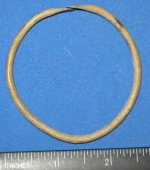
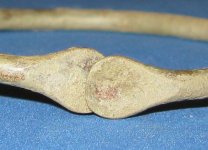
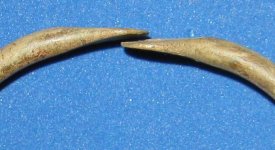
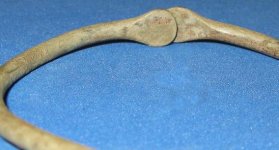
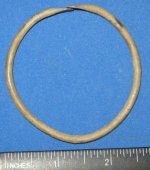
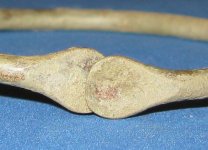
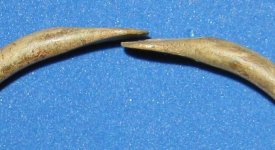
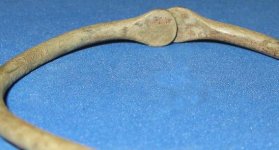





 .................AS many have said a well deserved banner .......CONGRATULATIONS...........Goldbill
.................AS many have said a well deserved banner .......CONGRATULATIONS...........Goldbill

